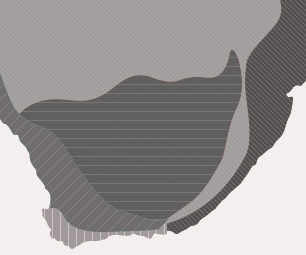Shrub
Aloe marlothii A.Berger
Family:
Common names: mountain aloe, flat-flowered aloe (Eng.); bergalwyn (Afr.); inhlaba, umhlaba (Zulu)
Plant Attributes:
Plant Type:
SA Distribution:
Soil type:
Flowering season:
PH:
Flower colour:
Aspect:
Gardening skill:
Special Features:
Horticultural zones

Aloe linearifolia A.Berger
Family:
Common names: dwarf yellow grass aloe (Eng.); inkhuphuyana (isiZulu)
Plant Attributes:
Plant Type:
SA Distribution:
Soil type:
Flowering season:
PH:
Flower colour:
Aspect:
Gardening skill:
Special Features:
Horticultural zones

Aloe khamiesensis Pillans
Family:
Common names: Khamiesberg aloe (Eng.); Kamiesberg-aalwyn, tweederly (Afr.)
Plant Attributes:
Plant Type:
SA Distribution:
Soil type:
Flowering season:
PH:
Flower colour:
Aspect:
Gardening skill:
Special Features:
Horticultural zones

Aloe krapohliana Marloth
Family:
Common names: Krapohl's aloe
Plant Attributes:
Plant Type:
SA Distribution:
Soil type:
Flowering season:
PH:
Flower colour:
Aspect:
Gardening skill:
Special Features:
Horticultural zones

Aloe gariepensis Pillans
Family:
Common names: Gariep aloe, Orange River aloe
Plant Attributes:
Plant Type:
SA Distribution:
Soil type:
Flowering season:
PH:
Flower colour:
Aspect:
Gardening skill:
Special Features:
Horticultural zones

Aloe cryptopoda Baker
Family:
Common names: tweekleur-aalwyn, geelaalwyn (Afrikaans)
Plant Attributes:
Plant Type:
SA Distribution:
Soil type:
Flowering season:
PH:
Flower colour:
Aspect:
Gardening skill:
Special Features:
Horticultural zones

Aloe claviflora Burch.
Family:
Common names: kraal aloe, cannon aloe (Eng.); aanteelaalwyn, kanonaalwyn, kraalaalwyn (Afr.)
Plant Attributes:
Plant Type:
SA Distribution:
Soil type:
Flowering season:
PH:
Flower colour:
Aspect:
Gardening skill:
Special Features:
Horticultural zones

Aloe catengiana Reynolds
Family:
Common names: Catengue-aloe, Catengue-aalwyn, okandolle (umbundu tongue).
Plant Attributes:
Plant Type:
SA Distribution:
Soil type:
Flowering season:
PH:
Flower colour:
Aspect:
Gardening skill:
Special Features:
Horticultural zones

Aloe broomii Schönland
Family:
Common names: mountain aloe, snake aloe (Eng.); bergaalwee, slangaalwyn (Afr.)
Plant Attributes:
Plant Type:
SA Distribution:
Soil type:
Flowering season:
PH:
Flower colour:
Aspect:
Gardening skill:
Special Features:
Horticultural zones

Aloe arborescens Mill.
Family:
Common names: krantz aloe (English), kransaalwyn (Afrikaans), ikalene (Xhosa), inkalane or umhlabana (Zulu)
SA Tree No: 28.1
Plant Attributes:
Plant Type:
SA Distribution:
Soil type:
Flowering season:
PH:
Flower colour:
Aspect:
Gardening skill:
Special Features:
Horticultural zones






Rate this article
Article well written and informative
Rate this plant
Is this an interesting plant?
Login to add your Comment
Back to topNot registered yet? Click here to register.